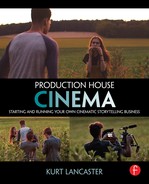With the business legalities covered, and the actual legal entity of your company registered as an LLC, this chapter shifts to how to create presence for your company on the web and the importance of using the right portfolio sample(s) that expresses your style. Potential clients want to see who you are, the vision of your company, and the professional-level work you’ve done. The quality of the website and film may make the difference in winning over a client.
The Importance of Presence
When Andrew and his team (Charles, Kyle, and David) started Zandrak, they developed a philosophy. Andrew tells me: “We didn’t really have a presence. And we didn’t really want to go out into the world and say, ‘Here we are! We are Zandrak hear us roar.’ Not until we had a website and an online presence that reflected that body of work. It reflected who we were.”
When considering your website—which is the potential client’s point of contact—you need to do it right. It’s the public face of your work and it must be professional. Andrew believes that “your website and the presence you put out there for yourself is your story—and if someone is hiring you to do storytelling in any capacity, then they’re going to expect that you know how to tell a good story. So you should put a lot of care into presenting what your own story is. Why do you do what you do? Everything about your business should reflect that. It should be the embodiment of your eternal philosophy, and your motivation. That’s going to come across a lot more effectively, a lot more charmingly, than putting together a top-notch state-of-the-line facility.”
In the end, Andrew explains, people don’t care “about statistics, no one cares ultimately at the end of the day about what something does for them. They care about how it makes them feel. That’s the fundamental law of advertising. You don’t appeal to someone’s pocketbook, you don’t appeal to their brain— you appeal to their emotions.”
The danger in trying to make your business unique is realizing that “everyone is aware that they’re being sold all the time.” If you want to do commercial work, then you need to “convince people that your advertising is entertaining.” It revolves around emotions. If you’re “trying to land a client or trying to establish your brand,” Andrew says, “the more you show your vulnerability and your honesty with your passion behind why you want to do something. The more you try and actually connect with this client, this potential donor, this investor, emotionally, the stronger chance you actually have of making it happen.”
When shaping your vision, this can become your brand. Those who start a business “know what the service they are going to offer is, they know what their competition is, they know what differentiates them from their competition, and they know who they are.” That’s easy, Andrew continues. “But what your brand is—that’s more difficult. “It isn’t just, ‘We are the most cutting-edge, innovative, quirky production company in town’—that’s anybody. Rather, ask, ‘Why are you doing it?’” Andrew says that if you’re networking at a party, “don’t ask someone what they do, but ask them what they like to do, or why they do what they do too. A ‘what they do’ question is closed. ‘What do you do?’ I’m an author. I’m a teacher. Great, end of discussion. We’ve just answered the facts.” But when you ask the why question, then you get deeper. “Our goal at Zandrak,” Andrew explains, “was to not just make commercials or not just make films, but to tell a story in 60 seconds—to do branded storytelling.”
Ultimately, “you should find what you’re good at and scale it down. So if you live in any city in the world, there are small businesses, there are startups, you can look at the incubators, these are companies that get grant money to help seed the business”—these are potential clients, he says. You can help “build that new business with a video.”
Web-Building Resources
This chapter isn’t about how to build a website—there’s no space for that, and there’s plenty of resources online. One easy-to-use site that allows you to create a website with no coding while maintaining a clean and cutting-edge design is Squarespace.com. It provides free access to a blog-style site, but there are many others. The Grid is another option (http//thegrid.io). The scrolling parallax style found on many cutting-edge websites integrates text, images, and video in a visual way.
Ultimately, there are two options if you’re trying to make your life a bit easy when getting a website built:
- Hire a professional web designer who can execute your vision, your story, through the web design.
- Use one of several noncoding, but design-friendly, website builders:
- Pagecloud: http://pagecloud.com
- Squarespace: http://squarespace.com
- Wix: http://wix.com
- The Grid: http://thegrid.io
With these tools, you do not need go beneath the hood. Pagecloud requires no coding and utilizes visual tools to create cutting-edge designs. (You can even copy another web page, then replace it with your content. You can also drag and drop designed images from Photoshop.) The Grid uses artificial intelligence algorithms and creates a compelling design for you. Wix uses HTML templates, so you can tweak them if you want, while Squarespace engages in visual design elements from templates. All of these will be cheaper than hiring a designer if you’re on a tight budget. Look at good examples of websites you like and find ways to utilize some of the design concepts.
Let’s look at Stillmotion’s website as a case study.
Case Study: Stillmotion Website
Let’s review Stillmotion’s mission statement, describing who they are:
Stillmotion is a Filmmaking Agency and Concept House.
By partnering with our team, you are engaging a strategic collaboration of psychologists, authors, social media experts, engineers, educators, and Emmy-Award-winning filmmakers.
We don’t make commercials.
We don’t sell your product.
We tell stories that make the right audience fall in love with you.
If we look at Stillmotion’s smartly and beautifully designed website, we can see how it integrates storytelling with their portfolio—it’s one and the same. It tells their story as they show their work. Page one (Figure 4.1) reveals an arresting image (http://www.stillmotion.ca/). This page has since been updated, which most nimble companies do in order to stay current and not come across as stale.
By stating, “Bold stories for those who want to be remembered”—along with a strong, bold image in the background, the site grabs your attention. It tells us that these are image makers and they know how to tell stories with images. There are three menu items below the text—Who we are, Our process, and View films. These will branch you off to new pages, but if you scroll down you find their portfolio (see Figures 4.2 and 4.3).

Figure 4.1 The opening page to Stillmotion’s website, as of fall 2015. (Courtesy of Stillmotion.)
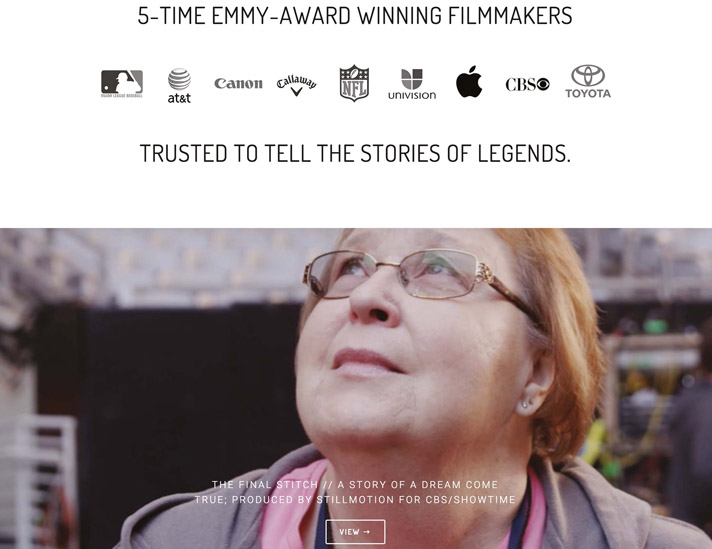
Figure 4.2 Stillmotion’s portfolio is integrated into their home page and as you scroll down you can see a still from each film along with a link to the film. (Courtesy of Stillmotion.)

Figure 4.3 Stillmotion’s book trailer project, My Utopia, detailed in Chapter 8. (Courtesy of Stillmotion.)

Figure 4.4 Stillmotion summarizes their storytelling process through several scrollable pages, beginning with this one, which highlights their MUSE storytelling process.. (Courtesy of Stillmotion.)
By listing their major awards (five Emmys), they’re establishing themselves as award-winning filmmakers and they place the logos of some of their major clients—from AT&T and NFL to Toyota. They describe the film, “The Final Stitch // a story of a dream come true”, a project that they produced for CBS/ Showtime.
Scrolling down, the site continues to another project, “The haunting true story of a 10th grade English presentation from 1981,” which is a book trailer for a nonfiction book.
By designing their site around strong still images from their film projects, Stillmotion establishes themselves as those who know how to tell stories through compelling visuals. They profile several projects in this way, while at the same time showing their awards and their film education tools, and discussing their project MUSE, a worldwide outreach of their storytelling process (under the tab, process).
“Speak to the heart to move the mind” is a key statement about their storytelling approach and how they educate other filmmakers and students about this approach, which revolves round People, Places, Purpose, and Plot. Their website reflects their storytelling style.
Portfolio Film Case Studies
Portfolio films should represent the best that you can do, while at the same time defining your cinematic style. In both of the examples below, these are strong films made on very low budgets and may not be as polished as the Chevrolet commercial, “Maddie,” described in the Introduction, but they are examples that define their respective companies. At the same time, notice how each film utilizes different forms of the cinematic techniques explored in Chapter 1.
If you don’t have a strong portfolio piece, then you will need to create one. When creating a portfolio piece, you’re either doing something that’s a work for hire, as a volunteer, or as a school project that you did before opening your business. Choose wisely. Make sure the piece is flawless and directly reflects your storytelling style. (I’ll discuss the idea of a “sizzle” reel in the worksheet section at the end of the chapter.)
Stillmotion’s “Old Skool Café” (https://vimeo.com/42108559)
Stillmotion’s “Old Skool Café” video was created as a volunteer piece. It gave Stillmotion a way to practice their storytelling skills, while at the same time drove home their approach and style to attract an audience and potential clients.
We can see a strong sense of visual storytelling revolving around a documentary style—it would set the tone and style of everything Stillmotion stands for. Let’s break it down (it’s under six minutes) to see what elements worked for them. I provide this analysis not so you can mimic Stillmotion’s style, but to get you thinking about how you approach your portfolio film. This should bring home the point that the level of detail and story planning needed to make a good piece doesn’t just appear. It takes intention.
The film tells the story of several young adults who have faced hardships— from abuse to selling drugs to violence—and were taken in by Teresa Goines, who opened up a dinner club in San Francisco, run by these young people. It profiles each youth and briefly tells their stories and how this café gave them focus and turned their lives around. It reveals strong interview lighting with key, fill, hair, and background lighting, adding to their sense of strong cinematography. It includes environmental shots of the neighborhood as well as detail shots of the youth working at the café. It reveals the cinematic style that defines their approach to filmmaking and story, showing why this is a strong portfolio film.
The close-ups and detailed shots—beautifully composed and well lit—help define Stillmotion’s storytelling style. Story is revealed in action and through the emotional expressions on people’s faces. The interviews are not expository and boring, but emotional and engaging.
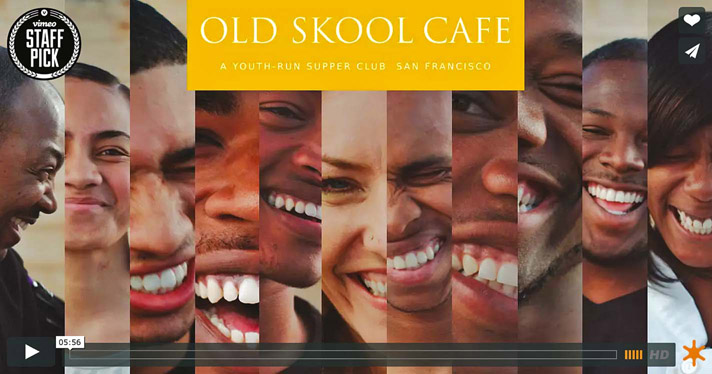
Figure 4.5 One of Stillmotion’s earlier works, “Old Skool Café”—a project that they did for free—reveals the tone and style of Stillmotion’s work. It reflects their mission to tell stories about those who change the world in a better way. (Courtesy of Stillmotion.)

Figure 4.6 Tammy Vaitai, the youth general manager and entertainer at Old Skool Café. Notice the composition and beauty of the shot through lighting (the placement of light and shadow). The hair light in the upper right helps separate her head from the dark background. The key light is soft and shapes her face with soft shadows. The background light adds color to the scene and provides depth on a two-dimensional surface. (Image courtesy of Stilllmotion.)

Figure 4.7 Stillmotion shows Tammy in her performer role at Old Skool Café. Again, we see the classic lighting setup (hard light on her left, defining the edge of her face and shoulder), a soft key light from the front, classic rule-of-thirds composition, lights on in the background providing depth. (Image courtesy of Stilllmotion.)

Figure 4.8 Daniel Bermudez, a former gang member, in the kitchen at Old Skool Café. Notice the shallow focal depth of field—a strong cinematic image that softens the background, making it pleasing to look at (when lit properly) and placing our focus on Daniel. The key light comes from the front right, while a hair light (or kicker) comes in from the left rear as a harder light source defining his cheek bone and separating the black shirt from the background. (Image courtesy of Stilllmotion.)

Figure 4.9 Daniel putting on his chef outfit in Old Skool Café. This is a detail shot, revealing his hands as he ties his apron—the detailed action shot placing us into the working atmosphere of Daniel’s work life. (Image courtesy of Stilllmotion.)

Figure 4.10 A meal is prepared in Old Skool Café. Notice the soft background of the chefs working. The focus is on the food, and the color and texture reveal how Stillmotion wants the story told in a certain way—a point-of-view shot of the food with workers prepping in the background. (Image courtesy of Stilllmotion.)
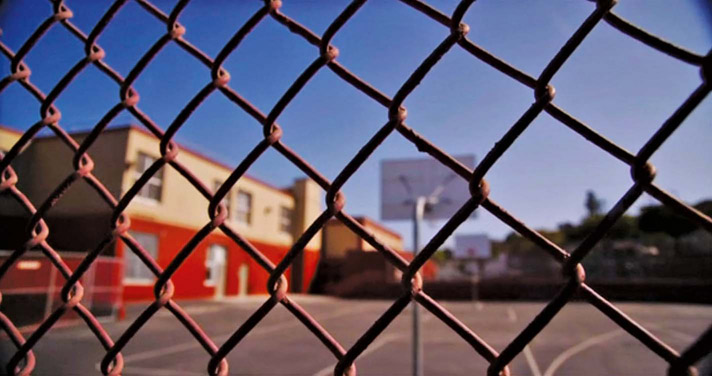
Figure 4.11 As part of the Old Skool Café story, Stillmotion includes shots of the environment, the streets these youths grew up in, to remind us that this environment is part of the story. (Image courtesy of Stilllmotion.)
Patrick Moreau, co-founder of Stillmotion, considers this one of his favorite pieces Stillmotion has ever done. It goes back to the basic storytelling principle which became their vision/mission statement: “Let the story move you before you move the story.” He feels that this approach is “very much inspired by anthropology, ethnography, the idea of participant observation, immersing yourself in an environment, living with people, being them, so it’s about living, breathing, and doing everything they’re doing.” He feels that they did this to some extent with “Old Skool Café”—“You go to dinner there, you meet all the kids.”
Music plays in the background, but very little ambient sound—if any—is used. This purifies and allows for control of their image and story. (But at the same time, a well-crafted ambient sound design can be a powerful storytelling approach.)
Zandrak’s “Still Life” (https://vimeo.com/92040599)
One of Zandrak’s earliest portfolio pieces, a project that began as a spec video for Nikon produced after their Hasbro commercial, “Still Life” was co-produced with their friend Jake Oleson, who also co-directed the film. In the end, Nikon didn’t accept the work, but that only forced Zandrak’s creativity down a new path. They rewrote their narration and decided to use the work as a portfolio piece. The snapshot moments of people’s lives around Greenwich Village in New York City—shot with the Phantom Miro camera—combined with a compelling narration script written by Kyle Harper, places this film into a poetic category all of its own. It is one of the “wow” films that make you want to keep watching and helps define what a portfolio film brings to the table when trying to win over clients.
I want to examine this film a bit more closely, since it uses a narration script1 to help set the tone (as opposed to the Stillmotion piece on Old Skool Café that utilized a documentary style).
The piece opens in silence, with the low angle of a photographer looking up at skyscrapers. The audio builds as the noise of New York City gets louder, then cuts to black as we hear, “How do we hold a moment?” Then we see a shot of a piano player in Washington Square Park and the soundtrack builds around this music. The shots include slow-motion moments and stills as we see a variety of people in New York, including people listening to the piano, a man playfully tossing a baby up in the air, a couple kissing, taxi cabs driving by, a youth on a skateboard, and so on as we hear the narration:
How do we hold a moment?
Is it a sight, sound, sensation?
Does it have weight you can support with an outstretched palm?
Does it have distance you can travel on restless feet?
Or do moments hold us in that instant when we let the universe drip from our soul, seep through our skin, and teach us to feel the difference between existing and living?
How can you capture something that is meant to capture you?
Swimming against the currents of time, unwilling to surrender.
We are concerned with every modern proof of experience and have cheated ourselves out of lives well lived.
Time was always meant to linger, to wrap around us in beauty that captures our minds, astonishes our souls.
The anthem by what we think we know is always changed and what we hoped to find is ever realized.
To hold such moments is to unearth the discoveries of a lifetime.
If only you lived them.
This text sets the philosophical and emotional tone of the piece. Kyle says that the script itself “developed throughout the production, but was primarily written after we had shot (but before we had a complete, locked edit).” This allowed him to focus on the writing and not be “too influenced by what was shot— instead, we wanted the editing to naturally work with the voice over,” Kyle explains.
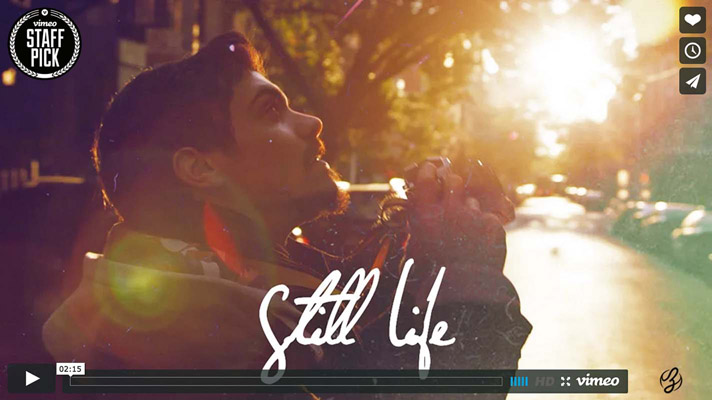
Figure 4.12 A photographer looks through his lens and captures emotional moments in “Still Life,” one of Zandrak’s early works that represents their storytelling style. (Image courtesy of Zandrak.)

Figure 4.13 A man plays a piano in Washington Square Park in Zandrak’s “Still Life.” (Image courtesy of Zandrak.)
The story captures a documentary style and reveals strong composition—and more importantly, emotional moments through that composition. This helps build their soundtrack, as music increases throughout the piece, setting a rhythm that reinforces the visual content of their work, which we can see in two additional shots from the film:

Figure 4.14 A man playfully tosses a baby in the air in Zandrak’s “Still Life.” The emotional beat drives home some of Zandrak’s specialty of capturing a story in moments. (Image courtesy of Zandrak.)
Notice how the aspect ratio changes between a 4:3 and 16:9. The 4:3 is used when the photographer is looking through his lens and taking shots, while the 16:9 is used when the photographer is observing with his eye.
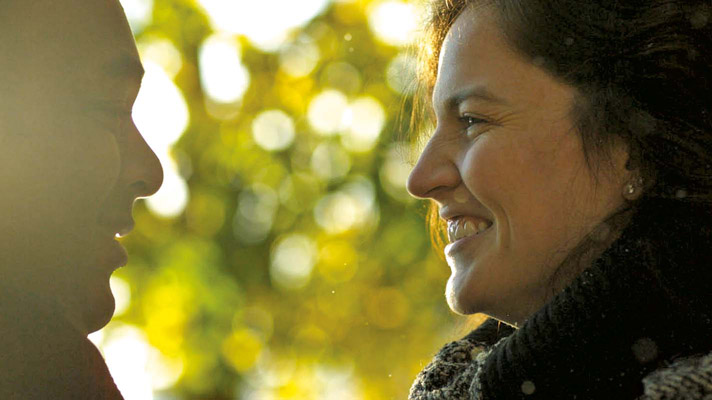
Figure 4.15 A couple about to kiss in Zandrak’s “Still Life.” Most of the shots are in slow motion (shot with a Phantom camera), which forces the audience to slow down and absorb such moments. (Image courtesy of Zandrak.)
By highlighting this film as a key portfolio work, Zandrak shows off their creative talent in composing shots, editing, emotional story beats, and writing revolving around a documentary-style shoot. (In Chapter 9 we look at how Zandrak engaged a narrative fiction to tell a story for the app, Moodsnap.) The shots show strong poetic moments revealing a cinematographer who feels the streets and people of New York City. The work forces us to slow down and appreciate moments, to live moments fully, and Zandrak is about finding such moments in stories, to reveal deep moments of appreciation for others—and the fact that they can do this and still sell a product directly reflects their mission as to why they love storytelling in the first place: “Films are how we speak. Collaboration is how we find words. Zandrak is how we have a voice,” as they state on the early version of their website before they would become Voyager Studios, LLC.
Kyle’s words have power on their own, but in collaboration with Charles Frank and Jake Oleson’s directing and shooting, they bring it to another level of visual storytelling (and a compelling musical sound design), and drive home why it makes such a strong portfolio piece. The sense of collaboration comes through when Charles talks about how he let Jake trust his own instinct when shooting the footage documentary-style:
There were so many instances where we would be in the city and Jake would see something and he would want to capture it. And instead of me questioning or trying to rip that vision from him or push mine onto him, I would completely let him. And in that way he would capture these really organic moments. He would then trust me when I found a shot as well. It allowed us to be real and authentic in those moments. A lot of it wasn’t staged and a lot of it was the result of us trusting each other to just capture what felt right for each of us.
Kyle explains how he, Charles, and Jake were “all inspired by an idea called ‘sonder,’ which is the feeling you get when you pass someone you do not know and realize that they have a fully detailed and deep life that you will never know.” After thinking it through, Kyle says, they wanted to focus the project to be “experiential rather than narrative, and the rest was just the result of exploring and shooting in New York City over a weekend.”
“Still Life” represents their story, their discovery and honing of their craft, where words and visuals stayed in balance. “Ultimately, people really connect with the piece,” Kyle explains, and “some connect more with the visuals, others more with the writing. It’s this mix of appeal that I think displays a consistency between our visual and written expectations and execution of the work.”
Ultimately, the story of Zandrak is a story about a young group of men creating a cinematic-style production house and being specific in how they would create branded commercials using techniques from narrative filmmaking. The most important take-away is how they establish this information through their website (see http://voyagercreative.co) and portfolio pieces. Andrew agrees, “We established a brand identity and not just a gallery of really cool-looking photos and films that we shot, but rather a philosophy.” They want to help build a brand around a story. “We’re bringing their brand to life,” Andrew explains. They will also be there after the work is completed to help promote it, including providing behind-the-scenes photos. “We do our best to push that spot to get awards, for it to get seen,” he continues. In the end, they want to be a creative partner and not just a team that executes someone else’s top-down vision. “If they just want to hire someone to do a spot that talks about their new health care, for example, in 30 seconds and put it on TV, we’re not interested in it,” Andrew states. As a company, he knows what makes Zandrak unique. “We found our niche, and we are continuing to explore that and we think there are a bunch of different ways to do creative branded storytelling,” he says. “There are a bunch of different ways to work with companies in a creative way.”
And this creativity is revealed in “Still Life.” Kyle says it “is one of our favorite pieces largely because of the way it came together. We got an idea, pulled it together super quickly, and had a lot of fun staying up late, traveling, and shooting all weekend to make it happen. All because we wanted to. The love of making films is really what ‘Still Life’ was constructed around, and that it happened to turn into something compelling for viewers is a direct result of that. This is really why we include it in our portfolio—because ‘Still Life’ speaks to what we’re capable of doing when we love what we’re doing, and we want that to be at the center of all of our work.”
In the final section of this chapter, several questions will help provide focus to approaches to your website and portfolio.
Worksheet: Creating a Website
- Write down your mission/vision statement (revise it if needed).
- Describe your story, which should be tied to your mission/vision statement.
- Outline your home or welcome page. Is it mainly visual? Which shot will you use? Will you rotate the shot every few weeks to make it look fresh? List several images (ideally, compelling stills from your projects). What text will you use on the welcome page?
- List your menu items, such as Welcome, About, Portfolio, and Contact. If you have one portfolio film, you might place this on the welcome page and not have it has a separate menu item. Do you want to include a bio? Perhaps you want to include that on the About page. Be honest and show emotional vulnerability.
- Describe your website style. Do you want a traditional page or a parallax scrolling page? As you scroll down the page, what information, images, or films do you want to provide? Describe them in detail. Draw it out or use examples from other pages and take screen grabs to give you a source of inspiration.
- Describe the content (words, images, films) on each of your other pages: About, Portfolio, and Contact, or whatever pages you feel you need.
- Can you design this website yourself? If so, use Pagecloud.com, Squarespace.com, Wix.com, or thegrid.io.
- Choose a hosting site, such as Bluehost.com, Godaddy.com, etc.
Worksheet: Your Portfolio
I feel that the best samples show complete short works, since clients can see what you can deliver. Creating a sizzle reel, where you show clips from many projects compiled into one short film, may be an alternative or an addition to a portfolio piece. But, says Wes Pope, a photo- and video-journalist who teaches multimedia journalism at the University of Oregon, be sure it tells a story, or “meta-story about who you are as a storyteller.” Use your strongest clips and edit them into a piece that expresses strong rhythm and pacing with its own beginning, middle, and end.
- What is the strongest film you’ve ever made? Why do you think it’s strong? Are there any weaknesses? Remove the weaknesses. If you want to create a clip or sizzle reel, then gather together your strongest clips and arrange them into a story in your edit. Make sure it expresses strong rhythm and pacing. If the cut feels long, then make it shorter. Using music may help.
- Describe how it fits with your mission vision.
- How does it show off the kind of projects you want to do?
- Screen it to people you don’t know. Does it grab their attention? If they’re excited, your potential clients will likely be excited. If not, do it over.
